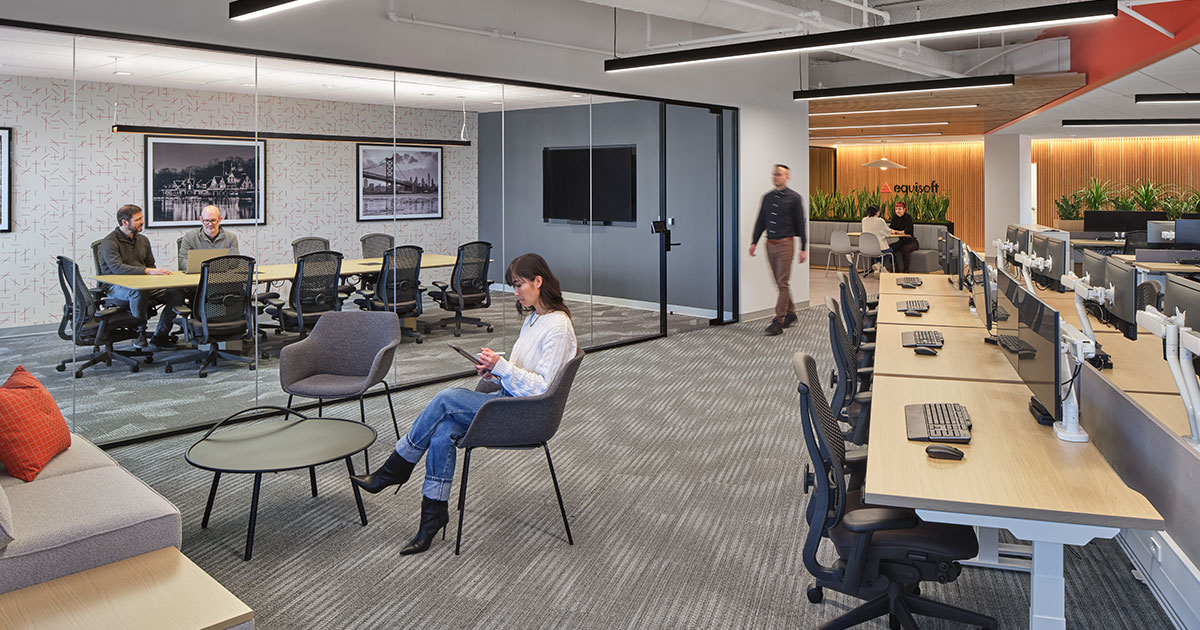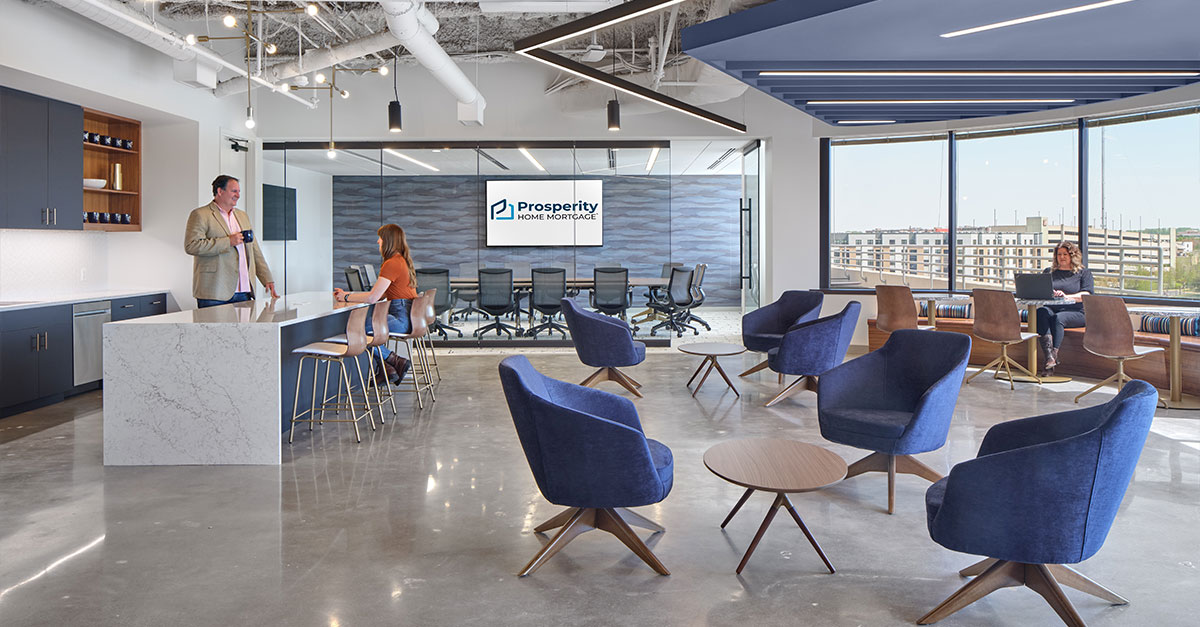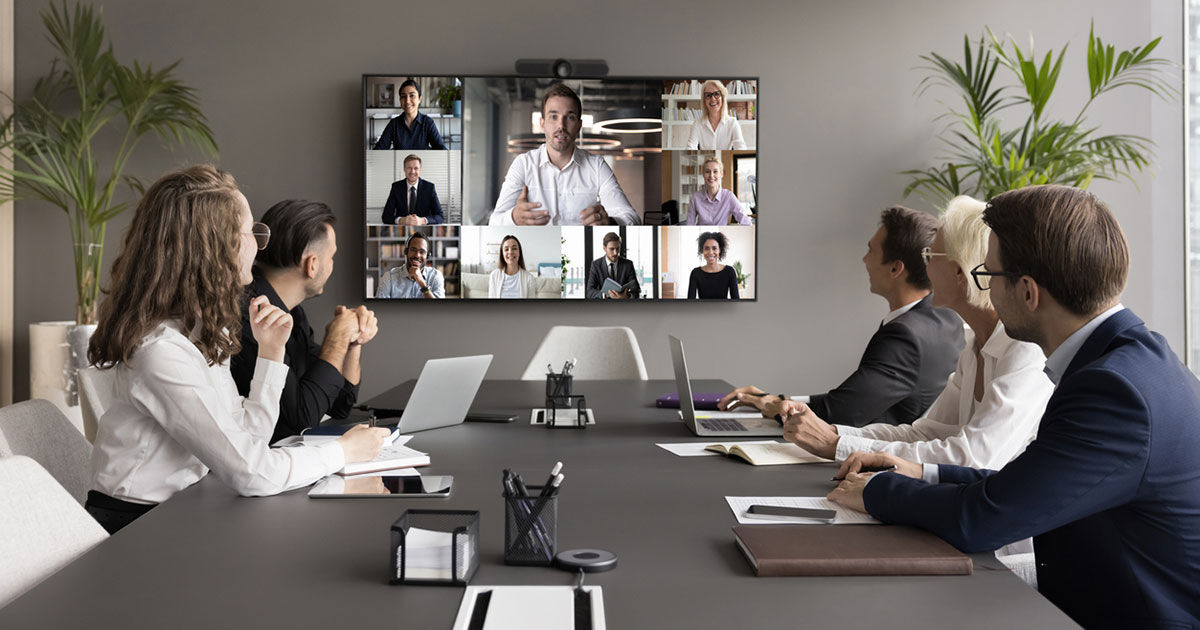Key Considerations for Supporting Hybrid Work in Your Office
With an increased adoption of hybrid working over the past five years, this model has become an established part of many modern work environments. Now, companies across the US are continually refining their workspace design based on employee feedback and business needs, exploring exciting opportunities to prioritize collaboration, innovation and employee wellbeing.
According to the latest Workforce Monitor® survey commissioned by the American Staffing Association and conducted online by The Harris Poll, 68% of Americans prefer a hybrid or in-person work schedule. This explains why many companies are troubleshooting their balance between in-office and remote work using a combination of employee feedback and data drawn from the effectiveness of their teams and products.

Striking the Balance
Striking that balance is key. While hybrid arrangements top the agenda, it is important to note that 37% of respondents in a McKinsey Global Institute survey go into their office on a daily basis. Many organizations maintain full-time in-office attendance as part of their operational model, highlighting the diversity of workplace strategies across industries.
Our own research provides some pointers as to why this is the case. In a private survey of dozens of law firms, for example, Formcraft workplace strategists confirmed that the top three most valued reasons for being in-person include attending face-to-face meetings with clients, collaborating with colleagues and educational activities – underscoring the mentorship that is so vital in the legal profession.
For companies committed to full-time office attendance, the focus remains on optimizing spaces to support productivity, collaboration and team wellbeing. Meanwhile, a successful hybrid workspace should combine the best aspects of remote and in-office experiences. It should offer flexibility for your teams while maintaining the benefits of in-person collaboration, granting your employees greater autonomy and work-life balance.
Supporting Hybrid Work in Your Space
Implementing a successful hybrid work strategy requires careful planning to support two distinct modes of operation: collaborative and focused work. That means maintaining productivity and enhancing communication, all while promoting equity between remote and in-person employees.
For organizations with fully in-office teams, similar principles apply – ensuring that workspaces are optimized to foster engagement, efficiency and team dynamics.
The Importance of Strategic Workspace Planning
We believe that strategic workspace planning forms the foundation of any successful hybrid working model. At its core, this planning should begin at the earliest opportunity and help you understand utilization patterns and prioritize activity-based workspaces.
- Understanding evolving utilization patterns: Utilization rates fluctuate depending on your team schedules, project demands and individual preferences. Tools like occupancy sensors or employee surveys can help your organization gather valuable insights into how your space is being used.
- Prioritizing activity-based workspaces: Activity-based working (ABW) is a workspace framework that divides offices into zones tailored to different tasks, such as focused work, team collaboration and casual conversations. Adhering to this philosophy will empower your teams to choose the right space to suit the task they’re working on.
The benefits of early planning are significant, helping you identify space requirements, understand the needs of your teams and define the role of the office in your organizational culture. Beyond these advantages, it can also help you spot and mitigate any risks, as well as secure resources and ensure your office aligns with your long-term goals.
Key Design Considerations
The design decisions you make to support hybrid work will often depend on the industry you’re in. However, we’ve found that there are some key principles that apply to virtually any space. The following pieces of advice are strong starting points.
The benefits of early planning are significant, helping you identify space requirements, understand the needs of your teams and define the role of the office in your organizational culture. Beyond these advantages, it can also help you spot and mitigate any risks, as well as secure resources and ensure your office aligns with your long-term goals.

1. Take Advantage of Natural Light
The relationship between daylight and emotional welfare is well understood. Feeling some kind of connection with the outside world captures the essence of what it is to be human. In a time where we spend the majority of our lives indoors, it is no surprise that each and every one of us identifies with an urge to experience light.
This isn’t just a philosophical musing: it’s a fact backed by decades of study on the links between mental health and daylight. As far back as the 1980s, insufficient daylight was seen as a contributing factor in what was referred to as ‘sick building syndrome’, a condition affecting workers in windowless offices. In modern times, it is understood that there is a clear link between a lack of daylight and conditions such as anxiety and depression.
Through thoughtful design, you can create a space that addresses those fundamental needs. Our work with Prosperity Home Mortgage is a strong example of a design prioritizing access to natural light and exterior views. The layout capitalizes on the building’s dramatic curved exterior windows, with unobstructed views for all work seats.
As reflected in a recent report by Harvard Business Review, natural light and views of the outdoors are the number one attribute of the workplace environment. Position your space as a real differentiator by giving your teams what they need.

2. Integrate Collaborative Technology
Effective hybrid workspaces rely on technology to bridge the gap between remote and in-office employees. However, even fully in-office teams benefit from advanced collaborative tools that enhance efficiency and streamline communication. A 2024 report in the Computers in Human Behavior Reports journal explored this concept in-depth, referring to technology as a “social binder”.
While some basic platforms can facilitate remote work, hurdles in communication and collaboration still exist. For instance, teams may experience difficulties in spontaneously sharing their ideas, or struggle with lengthy delays in getting the responses they need. In the vast majority of cases, asking your teams to install programs like Zoom or Microsoft Teams simply won’t be enough to make your hybrid working model succeed.
A holistic approach to technology is essential. That means equipping areas across your workspace with high-quality video conferencing tools, interactive displays and advanced AV systems, along with those basic essentials like robust wi-fi. Naturally, organizations operating within the tech sector will want to take this commitment even further, incorporating their own products in innovations in their space.
3. Address Acoustic Challenges
Effective acoustic design is crucial in the modern workplace. That is particularly true in hybrid workspaces, where open layouts and collaborative environments tend to amplify noise issues if not properly managed.
Noise issues aren’t just a distraction: they’re an obstacle to productivity and employee welfare, as confirmed in a study found in the National Library of Medicine. This study found that mental workload and visual/auditory attention is significantly reduced when people are exposed to noise at 95 dBA level, confirming spaces that balance focus and interaction are key.
Here are just a few ways to approach acoustic balance as part of a successful hybrid working strategy:
- Acoustic zones: Separate areas for focus and collaboration to cater to different needs.
- Advanced materials: Use ceiling baffles, wall panels, and flooring solutions to minimize noise reverberation.
- Technology integration: Employ white noise systems or sound-masking technology for additional sound control.
The future of workspaces is about adaptability, whether your team is fully in-office, hybrid, or somewhere in between. The right office design can help your organization thrive in this evolving environment. By addressing the key considerations outlined in this blog, you can create a workspace that supports your team, your goals, and your future.
Formcraft: Unified by Design
We’ve assisted businesses and organizations throughout the US in reaching their next milestone. If you’re considering troubleshooting or refining your current approach, let’s talk. To get started, contact us, and one of our workplace strategists will be in touch to organize a free, personalized consultation.